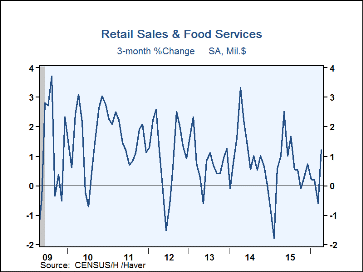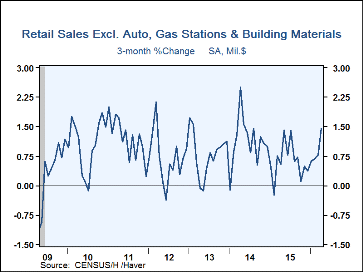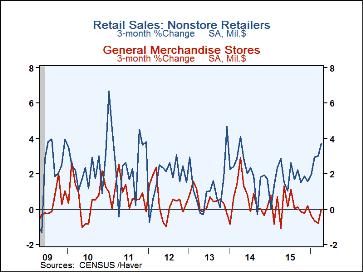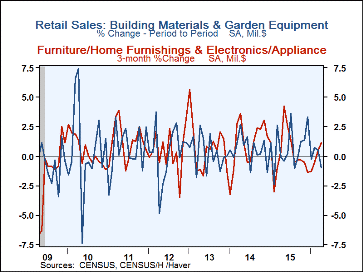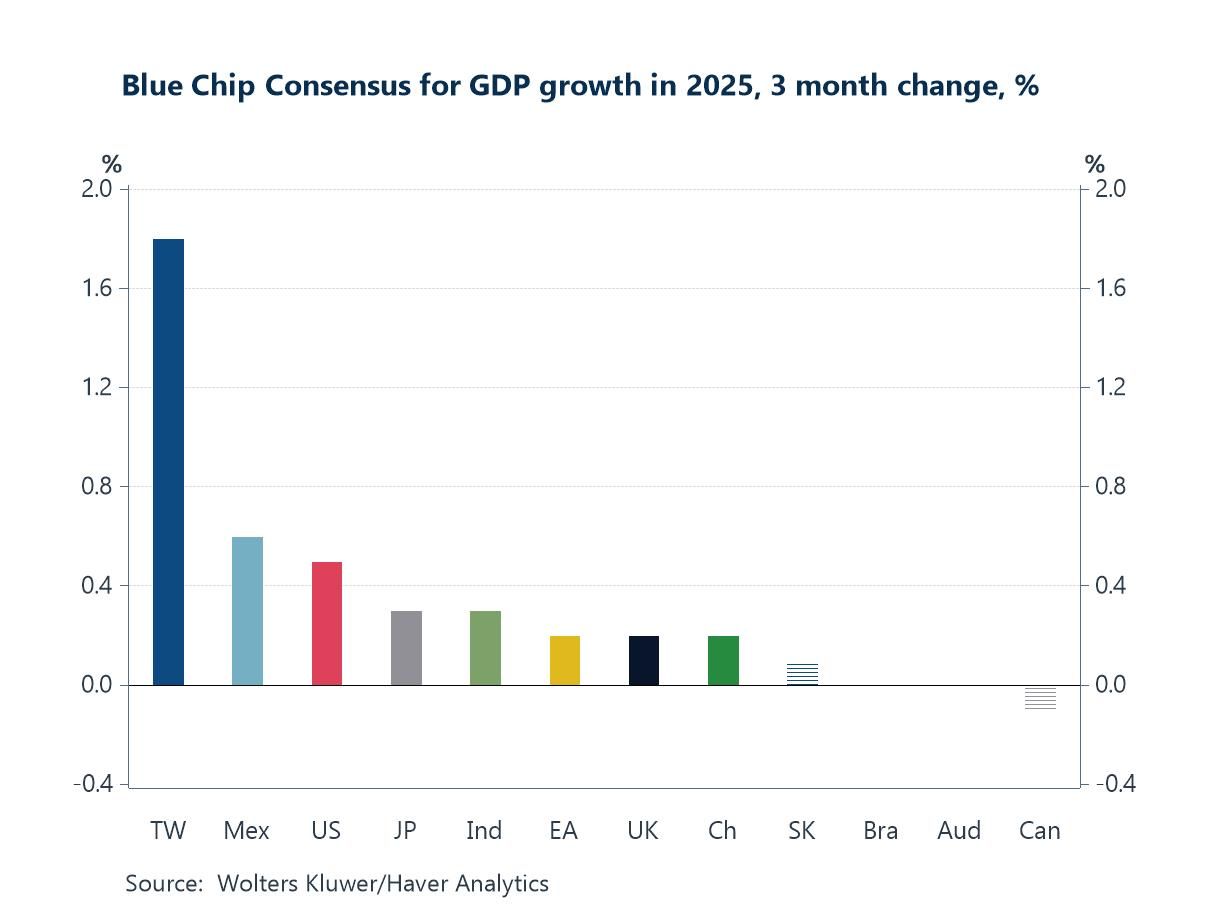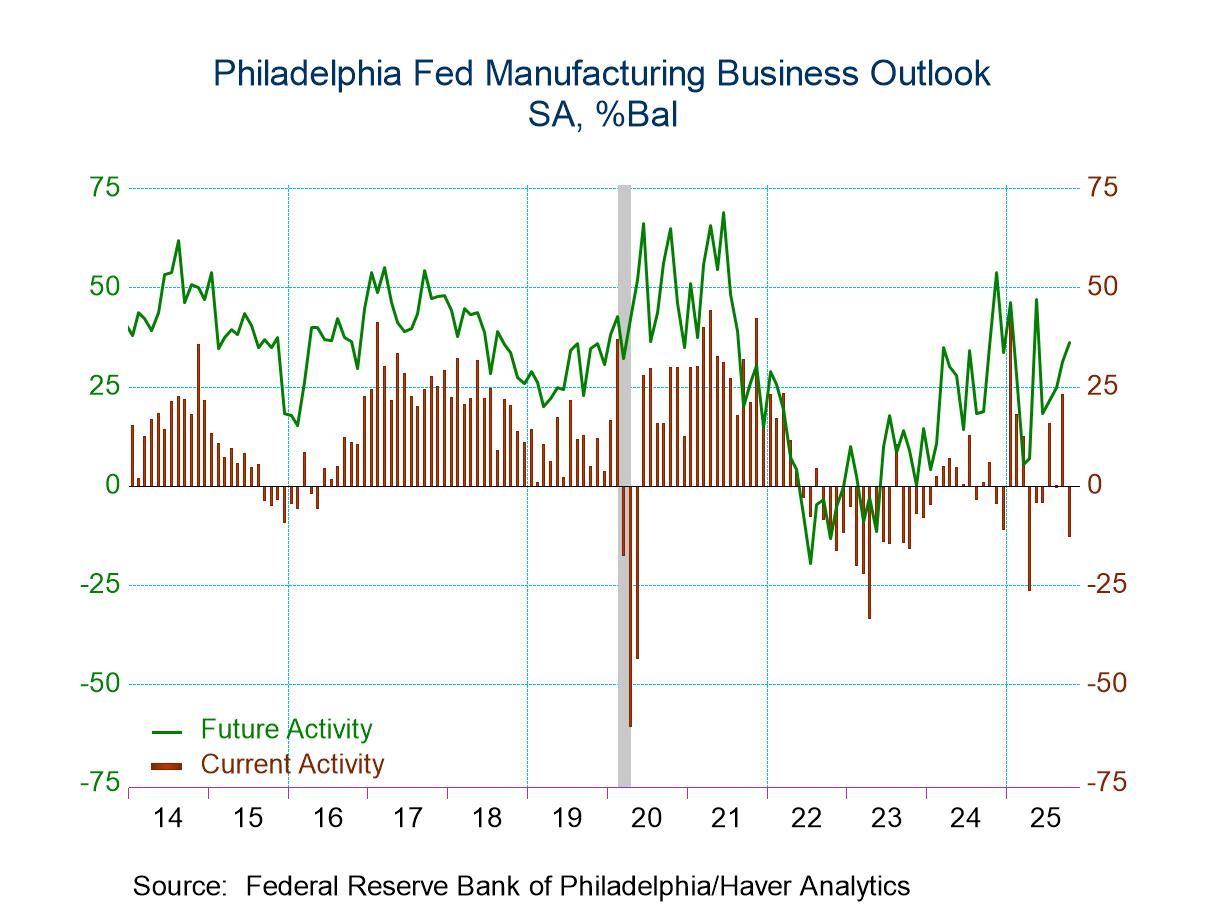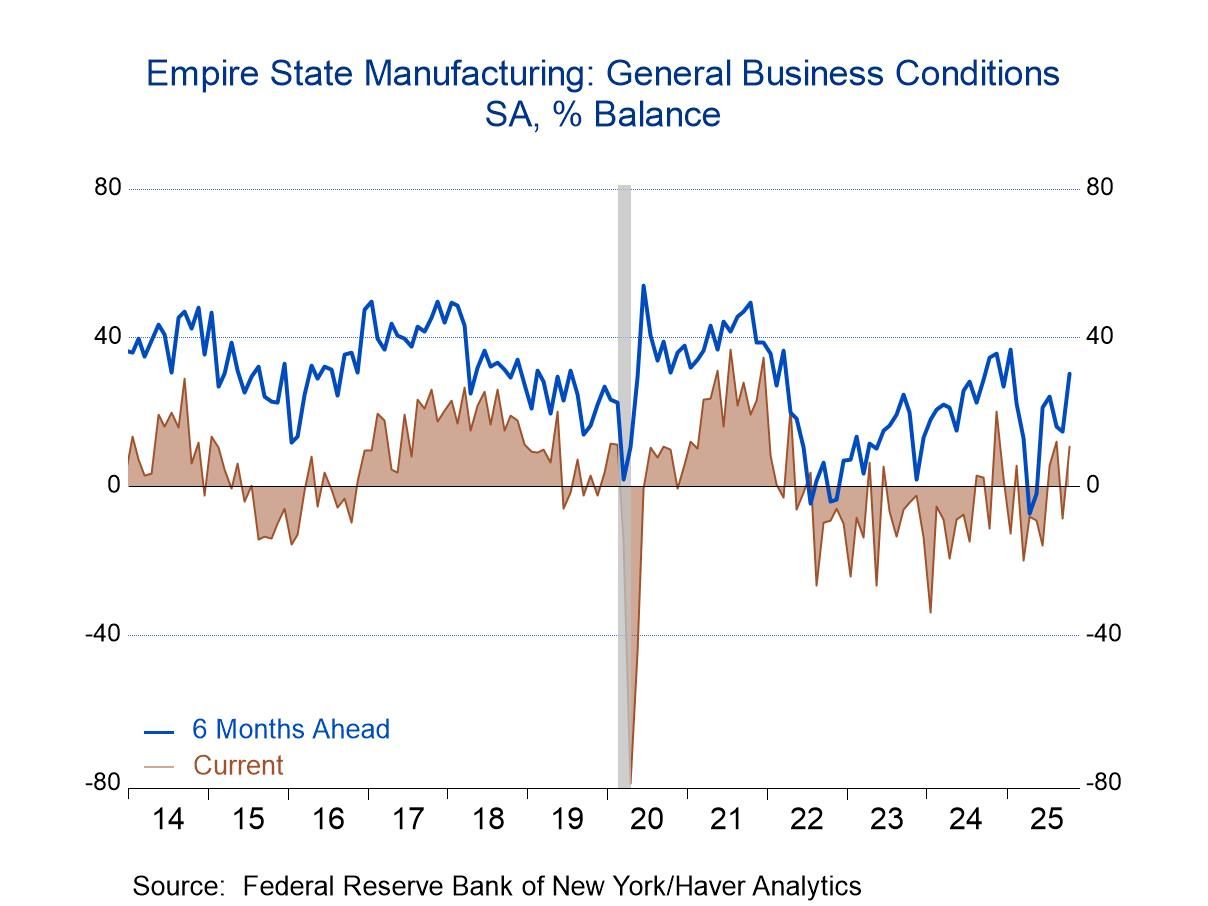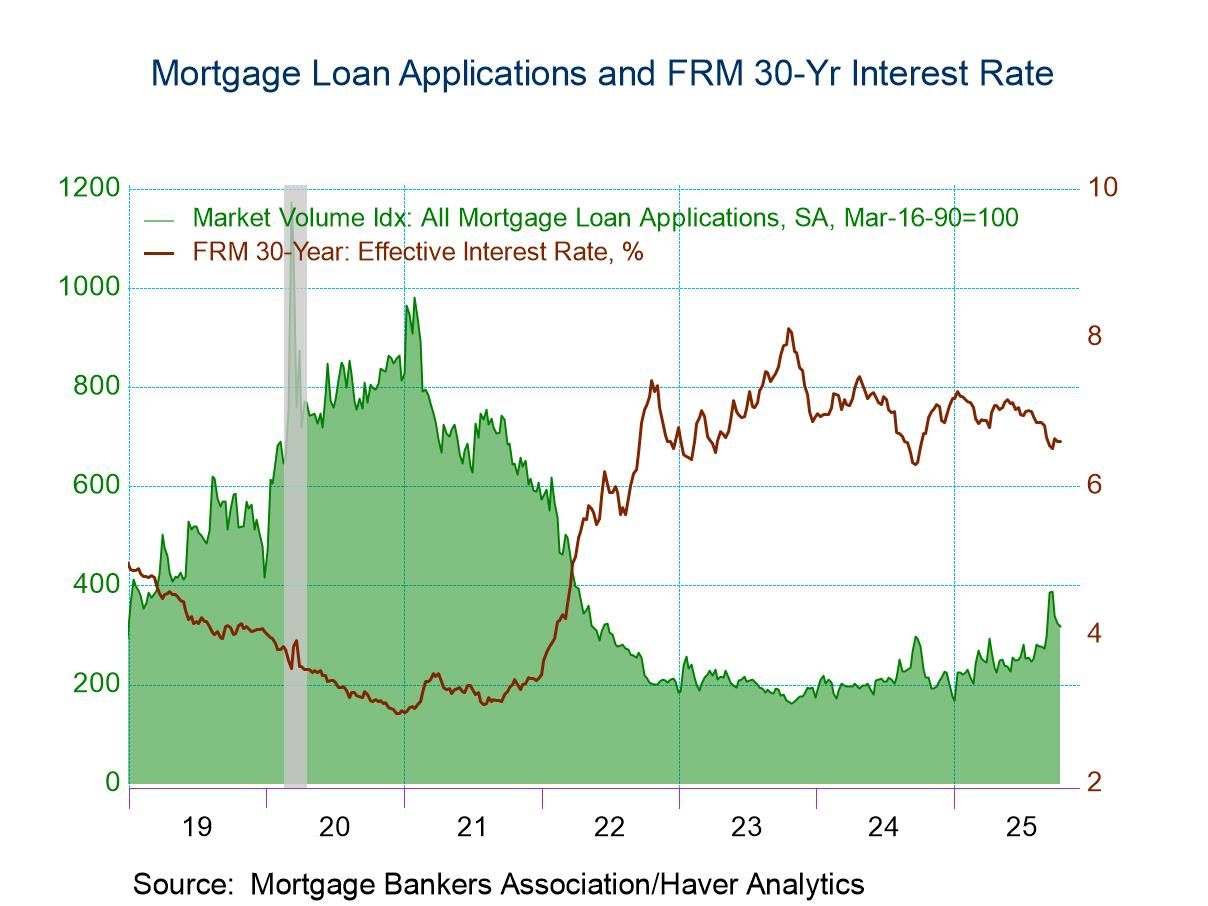 Global| May 13 2016
Global| May 13 2016U.S. Retail Spending Strengthens
by:Tom Moeller
|in:Economy in Brief
Summary
Total retail sales & spending at restaurants increased 1.3% (3.0% y/y) during April following a 0.3% decline, unrevised from the preliminary report. The rise compared to expectations for a 0.8% improvement in the Action Economics [...]
Total retail sales & spending at restaurants increased 1.3% (3.0% y/y) during April following a 0.3% decline, unrevised from the preliminary report. The rise compared to expectations for a 0.8% improvement in the Action Economics Forecast Survey. The figures reflect annual revisions published late last month.
Stronger sales of motor vehicles led spending as a 3.2% rise (3.1% y/y) recouped March's 3.2% decline. The increase compares to a 5.1% increase in unit auto sales which recovered the prior month's 5.5% drop. Excluding autos, total retail spending increased 0.8% (3.0% y/y) which built on gains of 0.4% and 0.2% in the prior two months. A 0.4% rise had been expected.
Gasoline service station sales rose 2.2% (-9.6% y/y) following a 3.1% increase as prices rose. Building material store sales fell 1.0% (+8.2% y/y) and reversed two months of increase. Purchases at restaurants improved 0.3% (5.2% y/y) following a 0.4% fall.
Spending in the retail control group, which excludes autos, gasoline, building materials and restaurants increased 0.9% (3.6% y/y). That also was improved from 0.2% and 0.4% increases in the prior two months.
Within the discretionary spending categories, sales of nonstore retailers jumped 2.1% (10.2% y/y), the strongest rise this year. Clothing & accessory store sales increased 1.0% (1.3% y/y) and made up a 0.8% decline. Furniture & home furnishings spending rose 0.7% (3.6% y/y) following a 0.2% rise. Purchases at electronics & appliance stores improved 0.5% (-2.0% y/y), about the same as one month earlier. Sporting goods store sales gained 0.2% (4.2%), the same as in March. Showing a slight decline were general merchandise store sales (0.5% y/y), and they're down slightly versus yearend.
In the non-discretionary spending categories, health & personal care store sales increased 0.9% (8.1% y/y) following two months of even stronger gain. Food & beverage store sales also increased 0.9% (1.9% y/y) after a 0.5% decline.
The retail sales figures are available in Haver's USECON database. The Action Economics figures are in the AS1REPNA database.
| Retail Spending (%) | Apr | Mar | Feb | Apr Y/Y | 2015 | 2014 | 2013 |
|---|---|---|---|---|---|---|---|
| Total Retail Sales & Food Services | 1.3 | -0.3 | 0.3 | 3.0 | 2.3 | 4.1 | 3.8 |
| Excluding Autos | 0.8 | 0.4 | 0.2 | 3.0 | 1.2 | 3.6 | 2.7 |
| Non-Auto Less Gasoline, Building Supplies & Food Services (Control Group) | 0.9 | 0.2 | 0.4 | 3.6 | 3.3 | 4.0 | 2.9 |
| Retail Sales | 1.4 | -0.3 | 0.1 | 2.7 | 1.6 | 3.9 | 3.8 |
| Motor Vehicle & Parts | 3.2 | -3.2 | 0.7 | 3.1 | 6.5 | 6.4 | 8.3 |
| Retail Less Autos | 0.8 | 0.6 | -0.1 | 2.6 | 0.2 | 3.2 | 2.6 |
| Gasoline Stations | 2.2 | 3.1 | -5.2 | -9.6 | -19.4 | -2.4 | -1.2 |
| Food Service & Drinking Places Sales | 0.3 | -0.4 | 1.9 | 5.2 | 8.0 | 6.1 | 3.7 |
Tom Moeller
AuthorMore in Author Profile »Prior to joining Haver Analytics in 2000, Mr. Moeller worked as the Economist at Chancellor Capital Management from 1985 to 1999. There, he developed comprehensive economic forecasts and interpreted economic data for equity and fixed income portfolio managers. Also at Chancellor, Mr. Moeller worked as an equity analyst and was responsible for researching and rating companies in the economically sensitive automobile and housing industries for investment in Chancellor’s equity portfolio. Prior to joining Chancellor, Mr. Moeller was an Economist at Citibank from 1979 to 1984. He also analyzed pricing behavior in the metals industry for the Council on Wage and Price Stability in Washington, D.C. In 1999, Mr. Moeller received the award for most accurate forecast from the Forecasters' Club of New York. From 1990 to 1992 he was President of the New York Association for Business Economists. Mr. Moeller earned an M.B.A. in Finance from Fordham University, where he graduated in 1987. He holds a Bachelor of Arts in Economics from George Washington University.


